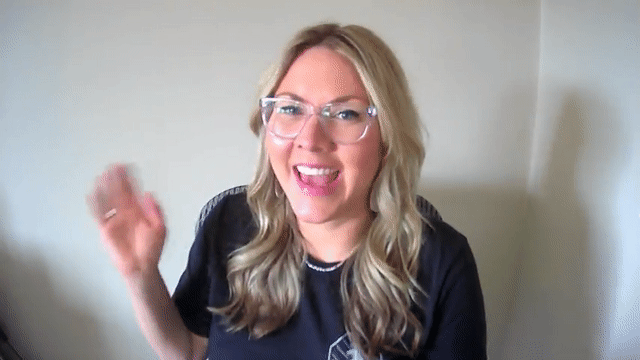Do you remember playing Telephone as a kid? Someone would start the game by whispering “Llamas are very soft,” then the last kid in the circle would confidently yell “Liam has dirty socks!”
Teachers and parents use this game to teach a variety of lessons, but it’s the perfect example of how easy it is to bungle communication. Especially in the digital world.
We all have our war stories about digital communication. You schedule a quick chat on Zoom but the other person hops in the Google Meeting. Then you both leave your respective meetings to join the other call and end up in a Tom-and-Jerry-like run around trying to find the other person’s digital conference room.
Or worse, you schedule a meeting and your point of contact can’t make it. So you end up speaking to someone you’ve never met before, who isn’t briefed on your services and relays a totally different message to your client after the call is over.
The last thing you want is to play telephone with the people who support your business. You need your clients to trust you, find value in your service and be excited to continue their partnership. All of this comes from exceptional communication.
In this interview, Kate offers her three secrets to improving your digital client communication. She reviews client communication best practices, offers advice about what tools you can use and highlights how you can ensure you’re meeting client expectations with clear communication.
#1: Use a Variety of Communication Channels
Every organization should be channel flexible, which means they have the ability to communicate across various communication channels without missing a beat. This might sound easy enough, but when you’re dealing with multiple clients who all need your attention, it can get tricky.
“Organization and communication are the two most important parts of successful client relationships,” Kate says. “Using the right channels is crucial for efficiency and staying on point.”
You need client communication tools that enable you not only to provide customer support but that also connects your sales, marketing and service teams.
Customer Relationship Management (CRM)
Many businesses accomplish team connectivity through their CRM. Using a CRM allows you to store all of your client information in one spot that’s easily accessible for every team. You can log every customer interaction so your entire team knows where they are in their customer journey, what they need from you and what their individual role is. This creates a seamless experience for your clients and builds trust with your brand.
“HubSpot’s CRM is great for company or client specific information because you can add company and contact records,” Kate explains. “You can add the notes from calls, see communication to and from the client and more. Plus, you can grant access to everyone working with that client, so you know your team is on the same page.”
Zoom
“Zoom (and other video conferencing platforms) is ideal for communicating with clients. It should be the primary interface for client meetings, whether that’s a check in, a campaign review or something else,” Kate says.
The reason video calls prevail in online communication is because it’s a close facsimile of face-to-face meetings. It helps build trust with your clients when they know who you are, what you look like and what you sound like. It makes them feel like they know you instead of just being a signature on an email.
Kate adds that the value of integrating video in your client service processes goes beyond scheduled Zoom calls. “Between Zoom meetings you can use 1:1 video services like Vidyard to explain designs, metrics, copy and more. This continues to build trust and is much easier for people to understand than reading through complex ideas in an email.”
Almost every business in the country defaults to email as their main communication channel. It’s fast, it’s easy and people can address messages in their own time. This is why it’s incredibly tempting to use email as your main communication tool with clients, but Kate advises against that.
“It’s okay to use email for quick updates or meeting follow-ups, but this should almost always come after you’ve had a ‘face to face’ meeting on Zoom. This way you know for sure that you and your client are on the same page.”
Kate added that most client feedback will come through email, but at times the tone of voice can be difficult to decipher. If you ever think a customer is feeling frustrated or isn’t happy with your service, she recommends picking up the phone instead of responding to the email.
“This is a great ‘in the moment’ response to your client,” she says. “It shows you’re willing to take the time to address their concerns and find a solution. Plus, it gives you a chance to accurately gauge their feelings. Are they really upset or did their email just make it seem that way?”
This is why video communication is so important in digital relationships. There is only so much you or your clients can effectively convey through written methods. It’s critical to have regular face to face interactions so you can gather all the context clues you need to help your client.
Internal Communication
“Good client communication starts with good internal communication,” Kate says. “You need your team to be on the same page and have access to the information they need to do their job.”
The first communication tool every team needs, remote or not, is a project management system. This allows the entire team to see what a client needs and who is responsible for those deliverables. It creates accountability on your part and streamlines the project management process.
Kate also notes that cloud storage services like Google Drive or Dropbox are ideal options for storing documents such as contracts, presentations or client submitted information. With everything in one spot, you can give access to those who need it on your team.
Lastly, you can use a messaging platform like Slack to connect team members. This is especially helpful for remote companies and employees. It helps you connect everyone working on the project so each team member is up to date and knows what stage the project is in.
All of these tips are great, but they only work if you’re dedicated to responding to your clients. (And you definitely should be.) Which leads us to Kate’s next tip: you need to be reachable.
#2: Be Reachable
No one wants to feel like they can’t reach their business partner. Not responding to client communications or being easily reachable is an easy way to make people feel like they’ve been scammed or made a mistake. Instead, Kate advises you set expectations early in the relationship so your customers can anticipate when they’ll hear from you.
“For example, many companies are moving to setting email expectations with clients. They might say they’ll answer the next business day or within 24 hours. This lets clients know that you are paying attention to their needs, and even if you don’t answer right away, you’re working to solve their problem.”
Whatever your policy is, it’s important to communicate it to your team as well. Your marketing consultants should have a clear understanding of their communication expectations to ensure a positive relationship with clients.
When to Communicate Expectations
What Kate means by “early on” is “right away.”
“It’s good practice to communicate turnaround times and communication expectations in the client kick off meetings so it’s set from the start of the engagement,” Kate says. “Not only does this help build trust but it also sets the stage for ultimate success.”
Finding an understanding with your clients of how and when you’ll communicate helps you to stay on track with projects and keep them satisfied with your service.
However, every coin has two sides. Just like under-communicating can cause problems in your client relationship, over-communicating can sometimes do the same thing.
How Often to Communicate
The cadence of communication might vary from client to client, depending on their individual needs. However, it’s helpful to maintain a rule of thumb for your business as a whole that you can use a benchmark.
“As an agency, we try to touch base with our clients once a week,” Kate says. “It might be through consultation calls, update emails or quick messages. However we can get in a quick connection to ensure everything is good and determine if there’s anything we need to assist with.”
You might choose to have bi-weekly meetings with clients or even monthly if that fits your business model. It’s critical to ensure you’re reaching out to them in some form in the weeks between meetings. This reminds them that you’re still working in the background and makes you available for any sudden changes or additional needs that might pop up.
#3: Transparency
The key to long-term business relationships is trust. Your clients need to know that you’re working toward their success and that you’re willing to be honest with them, even if it’s bad news. That’s why Kate believes transparency is key in your client communication strategy.
“Transparency is always the best policy, regardless of the situation.” she says. “However, there are two scenarios in which it’s of the utmost importance.”
The first scenario is feedback and revisions. Kate notes that if a client isn’t responding during the expected timeframe, it’s important for the account manager to be transparent in how that delay affects the entire project. Being open about this issue ensures the client understands why their overall engagement may get pushed back.
The second situation is when the client is having issues with your service or team. “If a client is frustrated, I encourage my team to talk about the elephant in the room with them first thing on their next call or meeting. By sidestepping the hard conversations, they’re hurting the relationship and the trust we’ve built. Plus, it stops us from moving forward in an aligned way,” Kate says.
Although your team might think they know why a client is frustrated or upset, it’s always important to get the client’s perspective. The more you understand how they’re feeling and explain your side of the issue, the better chance you have of coming to an amicable resolution.
“Without transparent conversations, both good and bad, you’re not serving the client wholeheartedly,” Kate says. “You want to be an extension of the client’s team and ensure they’re the hero in their organization. So you need to be an honest, open and trustworthy partner.”
What’s Your Communication Style?
Whether it’s finding a rhythm with a new client or reaffirming your relationship with a long-term client, how you communicate makes a difference. Clients are looking to you for information and reassurance that they’ve made the right decision to partner with you. This requires adept communication skills, being easily reachable and maintaining transparency at all times.
Aside from being a great communicator, Kate knows a thing or two about building lasting client relationships. Check out her blog on How to Build Long-Term Partnerships with Client Onboarding!








